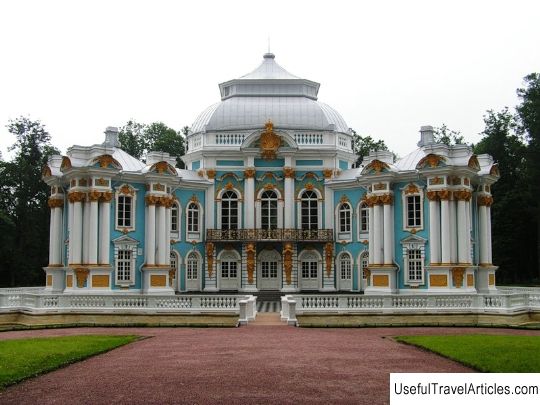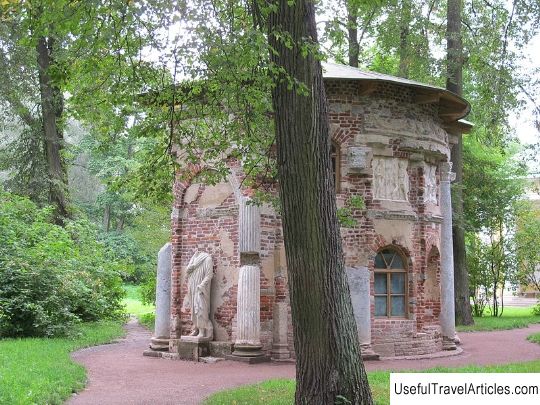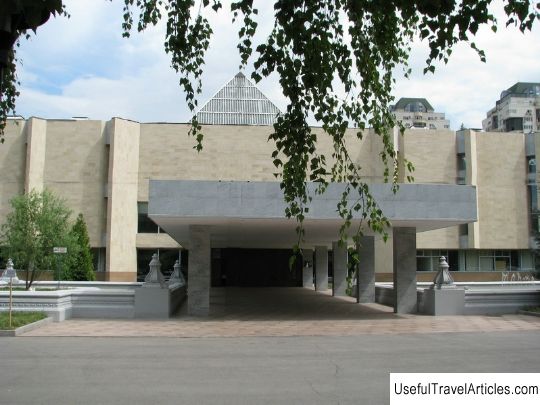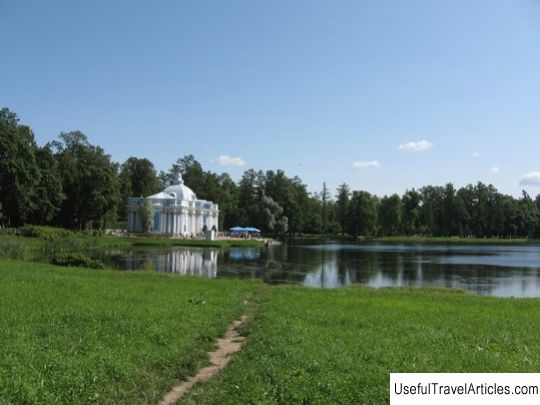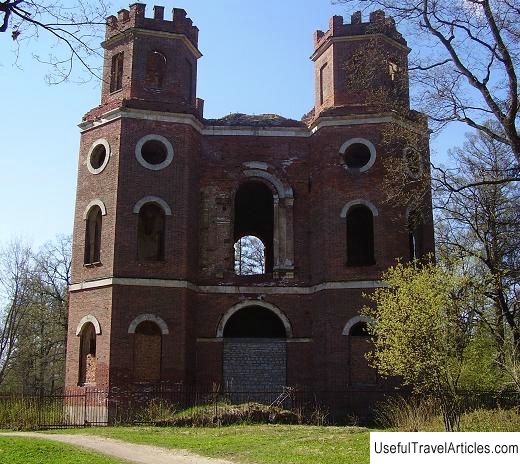Pavilion ”Hermitage Kitchen” description and photos - Russia - St. Petersburg: Pushkin (Tsarskoe Selo)
Rating: 8,2/10 (1243 votes) 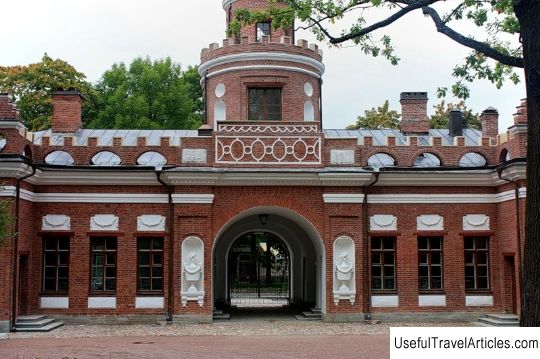
Pavilion "Hermitage Kitchen" description and photos - Russia - St. Petersburg: Pushkin (Tsarskoe Selo). Detailed information about the attraction. Description, photos and a map showing the nearest significant objects. Photo and descriptionThe Hermitage Kitchen Pavilion belongs to the Tsarskoye Selo Catherine Park. The Hermitage section has its own exit to the city on Sadovaya Street through the passage, which was made in the center of a one-story red brick building, built in the Gothic style, characteristic of the era of Russian classicism of the 18th-19th centuries. This building is called the Hermitage Kitchen pavilion. It was also called the court bakery. The Hermitage Kitchen is installed at the edge of the park near the canal and is connected by a bridge to its embankment. The Hermitage Kitchen Pavilion was built by order of Empress Elizabeth I together with the Hermitage Pavilion. But Catherine II, in connection with the construction of a canal started in 1774 along the border of the Old Garden, commanded the former nowhere worthless kitchen that existed here even before 1750, completely destroy and build a new one. The replacement of the old blank stone fence of the embankment and the canal and other measures were part of an extensive program of reorganization of the Pushkin Park. Vasily Ivanovich Neelov, according to whose plan the “Hermitage Kitchen” was built in 1775-1776, in 1748 was appointed “An architectural assistant” and was the right hand of F.B. Rastrelli, and in 1760 he was transferred to the post of architect. Vasily Ivanovich, who devoted his whole life to the construction of the Great Catherine Palace and Tsarskoye Selo parks (the work of the outstanding architect was continued by his sons, Ilya and Pyotr Neelov), was sent on a business trip to England to study park architecture. From there he brought many drawings, copies of designs for garden pavilions, bridges, and cascades. The widespread fashion in England to decorate parks with buildings stylized in the manner of English Gothic was reflected in the parks of Tsarskoye Selo and in the building of the Hermitage Kitchen pavilion. This is reflected in its material - brick, which was later painted in a red tone with white jointing, and in the nature of the elements of the crowning part of the structure - a jagged parapet with ends in the form of balls of obelisks-pinnacles in the corners and in a two-tier tower above the passage also with cogwheels of the first tier and its roof. Despite all this pseudo-Gothic character, the Hermitage Kitchen is, first of all, a monument of early classicism. This is described by a simple and strict interpretation of facades with shallow recesses, decoration of windows with garlands, medallions in the processing of cornices and, finally, accentuation of details with a white tint. To highlight the corners of the facades of the V.I. Neelov used the motif of semicircular niches, in which decorative vases were installed, in the 18th century sometimes called "cubes" because of their geometric shape, weight and massiveness. In the design of the facades of the pavilion, other techniques typical of early classicism were also used. Such, for example, is the decoration of the walls with a garland of stucco towels and panels over the arch of the gate. The passage under the arch was closed by elegant wrought-iron gates made by skilled craftsmen Lukyan Nefedov. The one-story building of the Hermitage Kitchen was used not only for purely practical purposes (as the kitchen of the nearby Hermitage pavilion, but after a while, as court bakery), but it also served as a gateway to the park, therefore it was also called the Red Gate. The old wooden bridge was replaced by a stone one with a balustrade on both sides. During the Great Patriotic War, the pavilion was seriously damaged, in addition, the Germans built a garage in it. After the war, a complete defeat was carried out here: windows were broken, scraps of German newspapers were scattered, empty cans, dirty rags. In 1980, a temporary cosmetic repair of the facades was made here. For a long time, the ticket offices of the Catherine Park were located in the arch behind the open gates, and in the building of the pavilion there was a pavilion and a cafe. In the period from 2002 to 2003, the restoration of the Hermitage Kitchen and the adjacent territory began, which ended in 2009.    We also recommend reading Obelisk of the Moscow Outpost description and photo - Russia - Golden Ring: Kostroma Topic: Pavilion ”Hermitage Kitchen” description and photos - Russia - St. Petersburg: Pushkin (Tsarskoe Selo). |
